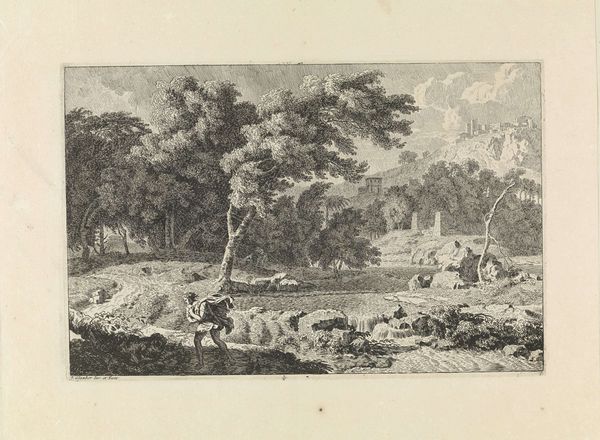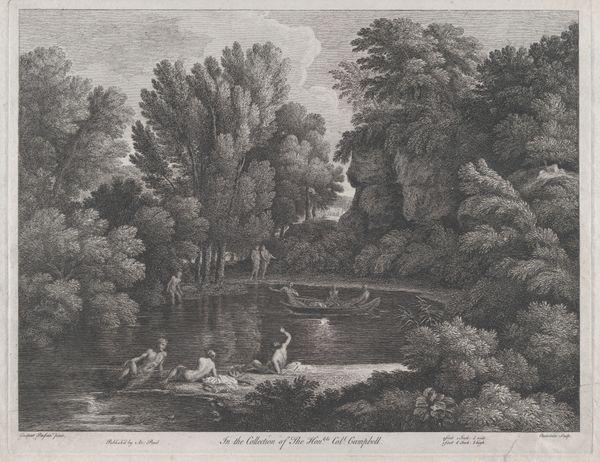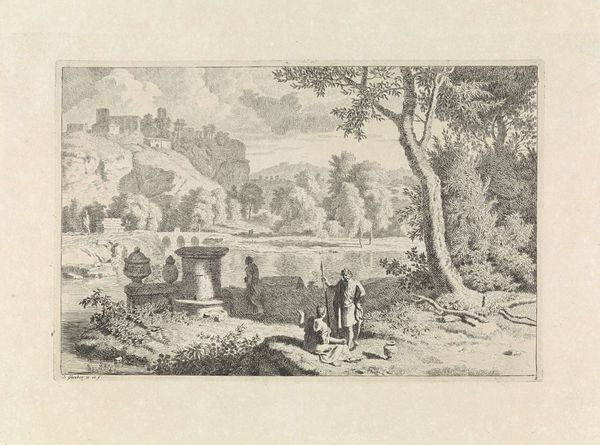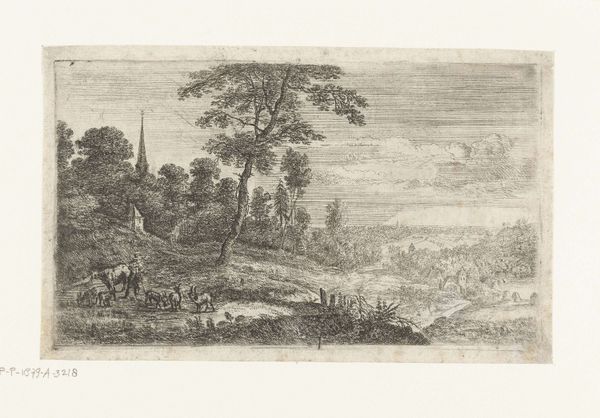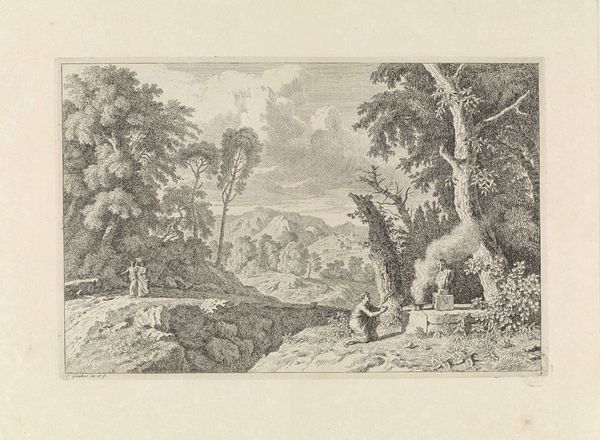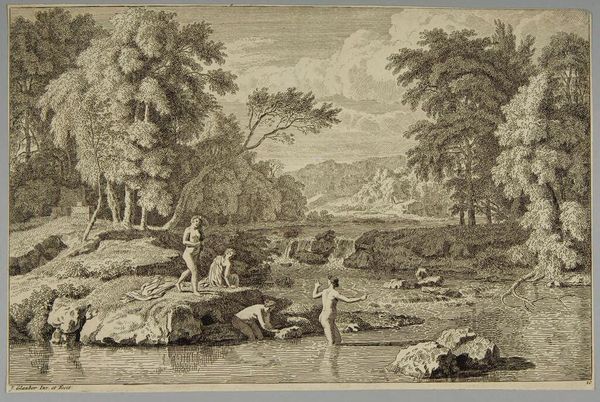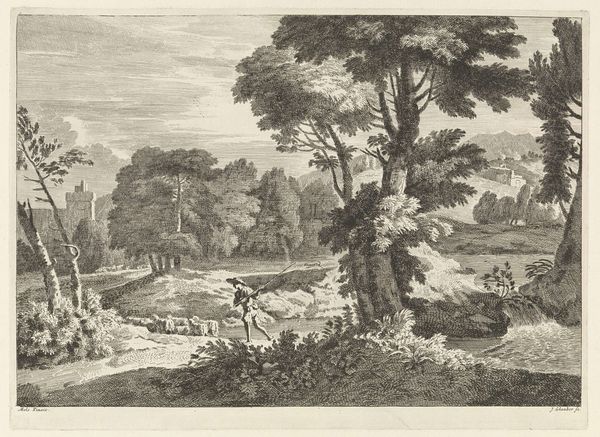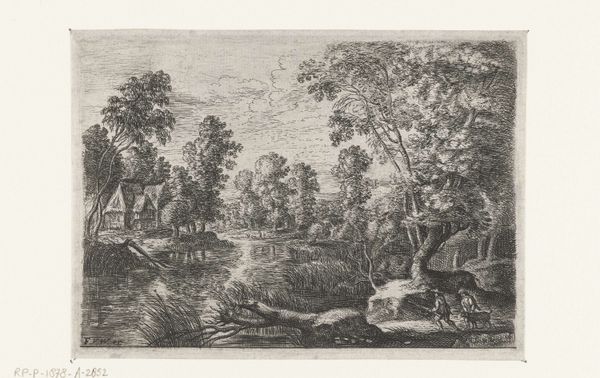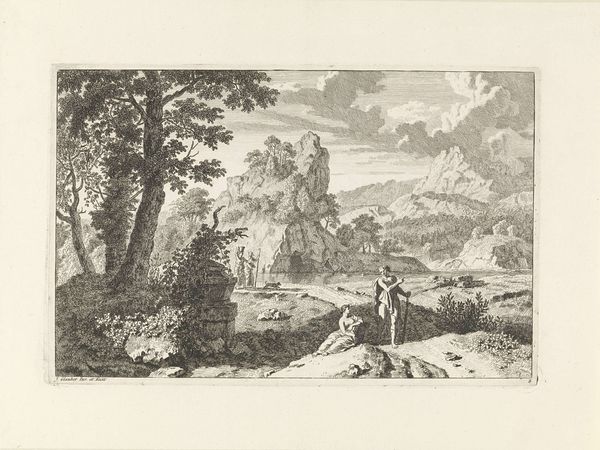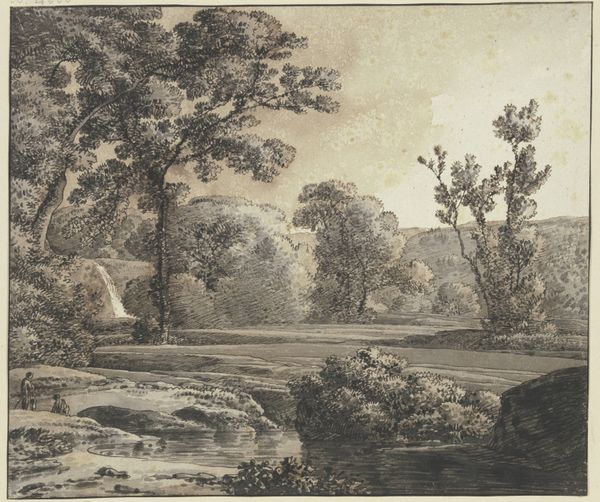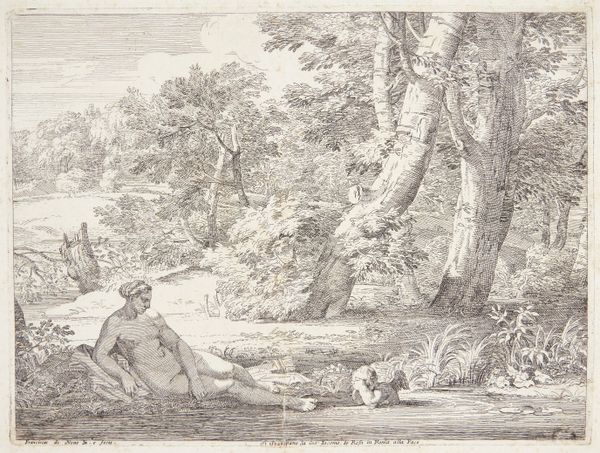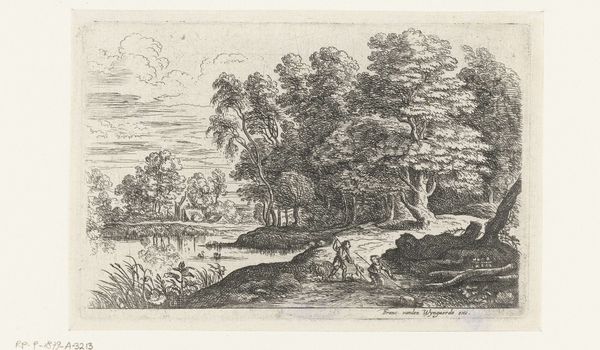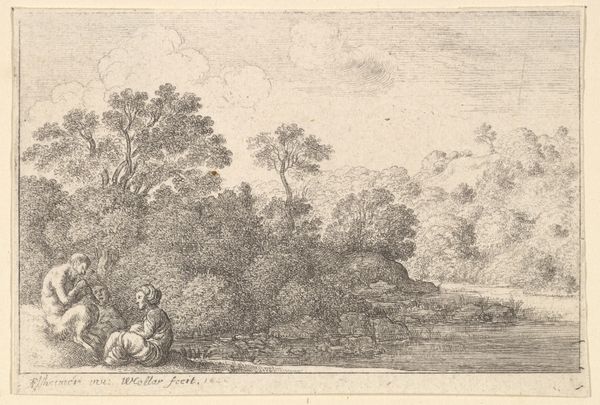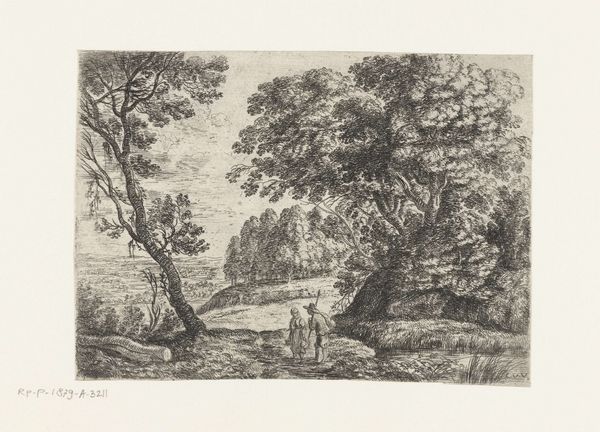
paper, engraving
#
baroque
#
landscape
#
paper
#
genre-painting
#
academic-art
#
nude
#
engraving
Dimensions: width 370 mm, height 240 mm
Copyright: Rijks Museum: Open Domain
Curator: Here we have Johannes Glauber's "Arcadian Landscape with Four Bathing Women," an engraving estimated to have been created sometime between 1656 and 1726. Editor: It's immediately striking, isn’t it? The cool tones of the paper combined with the density of the engraving create an evocative, dreamlike quality, a scene ripe with implied narratives. Curator: Glauber’s skill as an engraver is certainly on display. Look at the cross-hatching that defines form, especially the way he models the figures and evokes a classical ideal, the academic approach made material. Editor: I’m drawn to thinking about how the paper itself—its fibers and preparation—influenced Glauber's process. This paper support would have specific absorbency and texture that played directly into how the ink settled, making the medium itself complicit in this “classical” vision. How did those material constraints affect choices of subject and theme? Curator: Absolutely. The linear precision, achieved with careful strokes, enhances the pastoral, Baroque idealism, the composition drawing the eye into a harmonious depth created from layered light and shadow. Editor: Right, and this engraving isn't created in isolation. How did he learn to work this way? Who controlled access to the tools, the plates, the paper? It would be worthwhile to research printmaking guilds of that era, looking at workshop dynamics that shaped Glauber's specific artistic output and this kind of pastoral vision, so valued at the time. Curator: Perhaps we can dive into archival resources that speak more precisely to Glauber's hand in its production versus his workshop's input. What remains essential for me is how this work balances composition with skillful execution, all signs aligning towards elegance and decorum. Editor: Yes, to better appreciate those marks and balances, we should consider not only the artist's hand, but also the hands of all the laborers involved in the making of such prints—understanding who participates in the shaping of idyllic art objects. Curator: Indeed. An exploration that, on the surface, delivers pastoral harmony, offers intricate levels of depth on further inspection. Editor: It encourages us to think beyond the surface and into the layered process of creating an image.
Comments
No comments
Be the first to comment and join the conversation on the ultimate creative platform.
